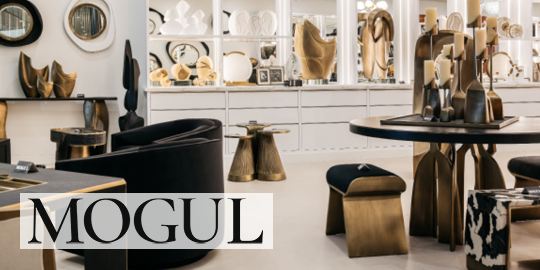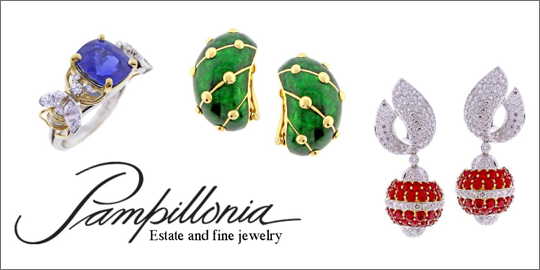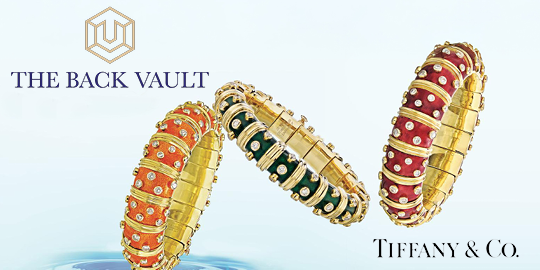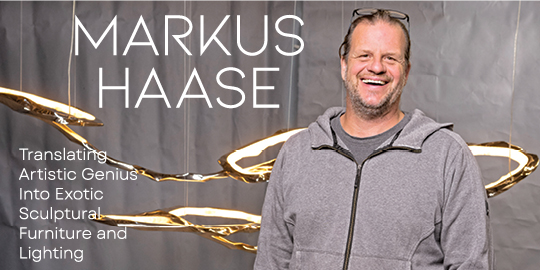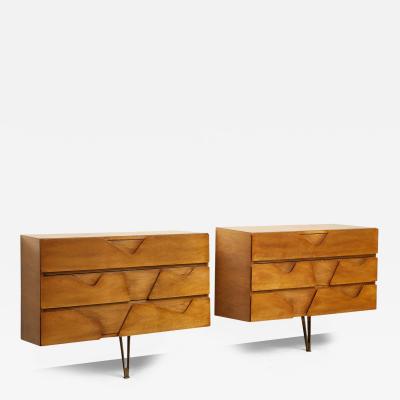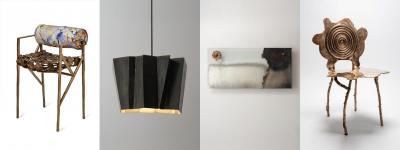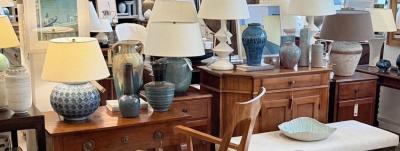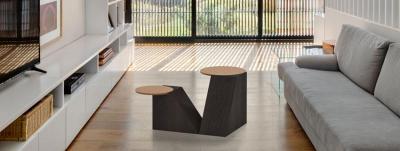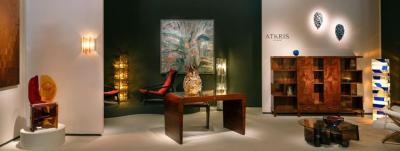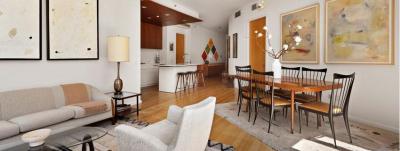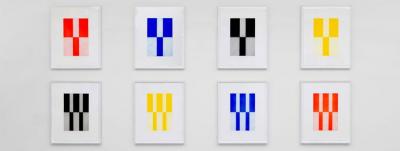AtKris Studio Champions Elegance and Craftsmanship in 20th Century Design
 |
| AtKris Studio’s booth at PAD Paris 2025, with spectacular works of vintage Italian design. At left, Gaetano Pesce’s “Nobody’s Perfect” chair, and in the niche, two Murano glass floor lights by Carlo Nason for Mazzega, a pair of Gio Ponti for Cassina lounge chairs and an oil painting by multi-disciplinary Dutch artist Maarten Vrolikj. At center, a rare 1938 desk and seat by Gio Ponti topped with a glass vessel by Maarten Vrolijk. Bookcase by Gio Ponti and Emilio Lancia, sculptural Nerone e Patuzzi C10 coffee table, and a 1960s blue Murano glass floor lamp by Carlo Nason for Mazzega. |
AtKris Studio Champions Elegance and Craftsmanship in 20th Century Design
by Benjamin Genocchio
Photography courtesy AtKris Studio
 | |
Krista van Oudheusden, owner AtKris Studio |
Krista van Oudheusden, owner of AtKris Studio in Holland, loves 20th-century design. She and her team scour Europe searching for the best examples of Scandinavian, French, and Italian mid-century design, which she displays in her gallery in Haaften, a small town close to Rotterdam. “I am interested in timeless pieces with a soul that bring warmth and exceptional style to your life for generations,” Oudheusden says. Incollect spoke with her at her gallery about the importance of building trust with her clients, education, and what’s trending now in the design market.
You have exhibited at PAD Paris. How was that experience?
PAD Paris is an incredible experience. We’ve now exhibited there two times and absolutely love the fair. It’s one of those rare fairs where the line between art and (vintage) design is blurred in the best possible way. We definitely see that there is always interest in really good historical design pieces, especially lamps, which are doing well at the moment.
 |
Rare 1938 desk and seat by Gio Ponti for Fontana Arte, in Santos rosewood veneer with brass star detail. |
Congrats on all your success. Certainly, hard work has been a major factor, but what else has helped you grow and succeed in a competitive industry?
Thank you! Hard work is absolutely key, but consistency, taste, and building trust with our clients also play a role. We’ve grown by being very intentional with what we source — we don’t chase trends but try to focus on quality, integrity, and timelessness. Also, relationships matter: we’ve built strong connections with design collectors, designers, and other dealers who respect our eye and our honesty. That kind of reputation carries into the marketplace and over time.
 |
Pair of “P30” lounge chairs by Osvaldo Borsani for Tecno, Italy 1953 in rich yellow ochre. |
You have more Italian design in your gallery these days. Is this a preference or more a function of market movements?
It’s a bit of both, I think. Italian design from the mid-20th century carries a unique combination of elegance and craftsmanship that resonates with us personally, but also with many of our clients. Designers like Gio Ponti, Ico Parisi, and Osvaldo Borsani pushed boundaries in design in ways that still feel so contemporary. There’s also a strong demand in the market for these designers and key pieces. Finally, a lot of wood is used, which is our personal preference when it comes to 20th-century design styles.
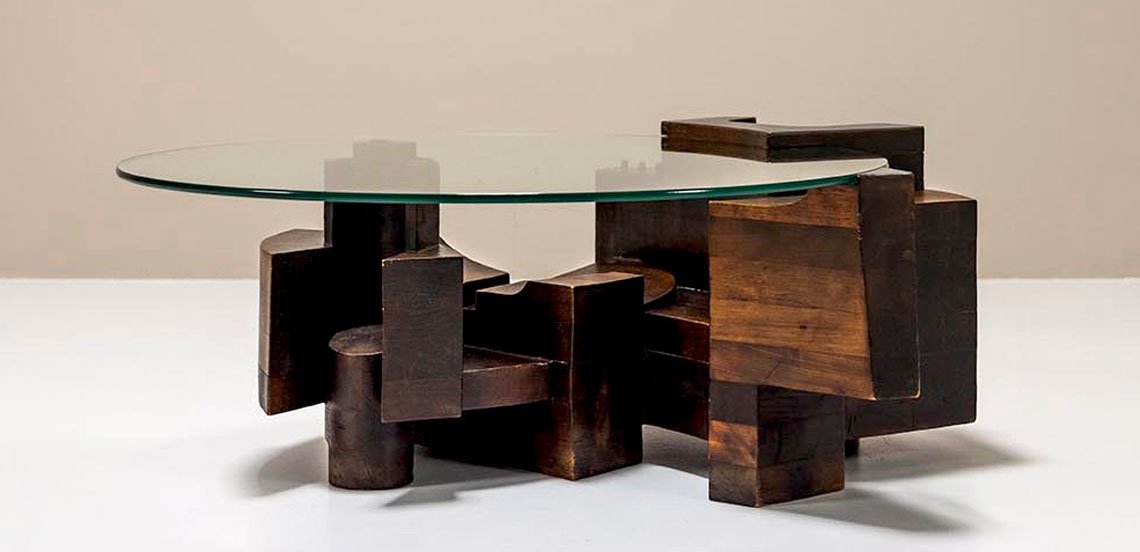 |
Giving architectonic Brutalist vibes is Nerone e Patuzzi’s 1971 C10 coffee table. The sculptural wood base has been partially scorched to enhance its chiaroscuro effect. |
You have also taken a strong interest in Brutalist design of the 1970s. What do you think about this design movement?
Brutalism is having a moment in the design world right now, and rightly so. It’s raw, architectural, and it's unfiltered. We love how it contrasts with softer, more decorative, sensual interiors — pieces by designers like Paul Evans or the Belgian De Coene or German Brutalist artisans are strong statements. They don't just sit in a room — they command it. I do have to say that the name Brutalist is applied to many things in the design world today, even if they are not strictly Brutalist or from the 1970s.
 |
Carl-Johan Boman lounge chairs with beautifully curved backs in sheepskin for Oy Boman Ab, Finland, 1940s. |
Which pieces in the gallery right now are you most proud of? Why are they special?
I am currently proud of the Gio Ponti desk and accompanying seat that we have: it was designed in 1938 and was produced by Fontana Arte. Ponti founded this company together with Luigi Fontana in 1932, specializing in glass processing and the creation of furniture accessories. The design of the desk, an inverted U-shape, is remarkable for its simple lines and elegant proportions, along with fine detailing. It is a real masterpiece. Some of the other pieces that are really special to me are a set of two Carl-Johan Boman lounge chairs in sheepskin for Oy Boman Ab from the 1940s — Boman was a key figure in Finnish modern furniture design during the early 20th century. I am also proud of the "Capanno" sculpture in linden wood by Italian artist Giuseppe Rivadossi, from 1974. This object/sculpture has been crafted in a truly phenomenal way — it is linear, yet at the same time grooved, curved, and voluptuous. It's brilliant.
 |
Nerone e Patuzzi acid-etched zinc headboard panel, Italy 1970s, with a 1959 reclining armchair by Nello Pini for Novarredo. |
How do you see the European design market evolving?
We’re seeing a shift toward more expressive, really sculptural pieces — for example, like the work of Nerone and Patuzzi that we have. There’s also a move toward sustainability and heritage in design everywhere these days. People want pieces that last, materially and aesthetically, and also that don't hurt the environment. I think we will continue to see a blending of eras and design styles in interiors — mixing mid-century, brutalist, modernist, and even new postmodern work in individual, personalized ways.
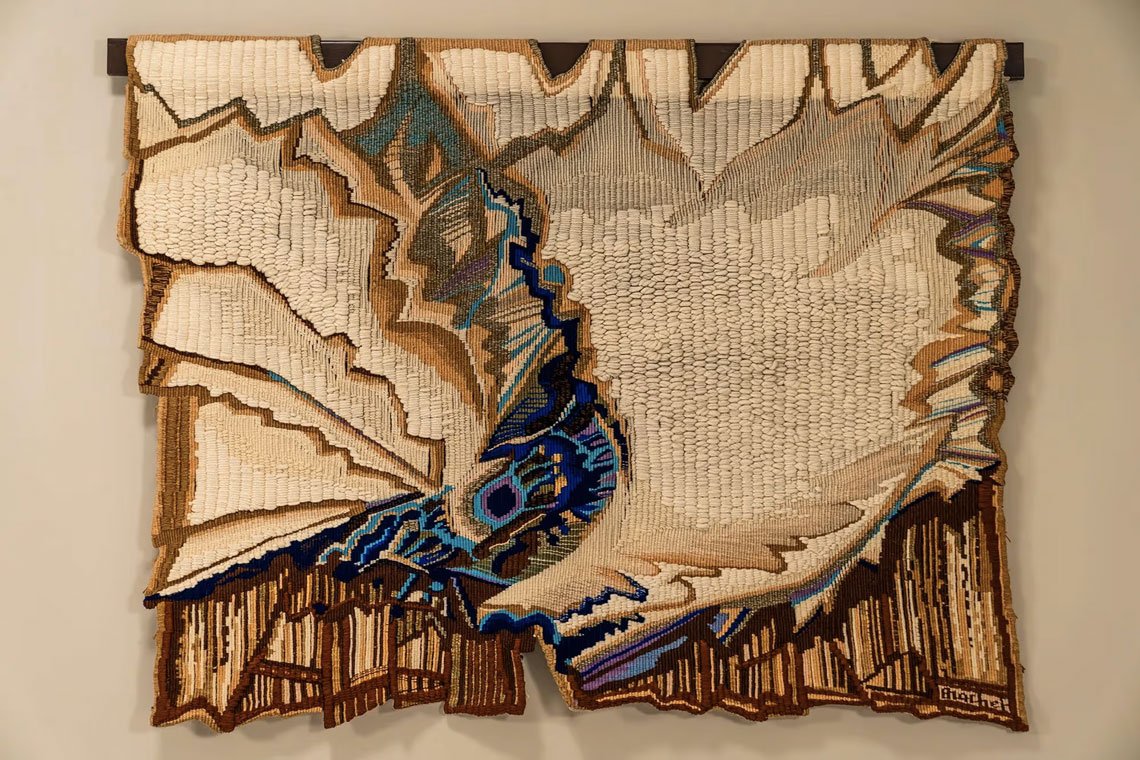 |
| Wall tapestry “La Vague a l’Ame” by Jacques Brachet, France, 1974. Brachet was known for his innovative and experimental approach to tapestry. His use of texture and shape created a textile object, rather than the traditional 2-dimensional tapestry. |
How important is online for connecting with customers? Do you still sell mostly at the gallery, or have online sales increased?
Online is essential for our business — we sell 80% online. It opens us up to a global audience who may never set foot in the gallery. We still love the personal experience of in-gallery visits and doing fairs, but increasingly, first contact — and sometimes even full sales — happen through our website or platforms like Incollect. You also have to be smart about it: we have found that high-quality photography and education, and storytelling about objects online really help bridge gaps.
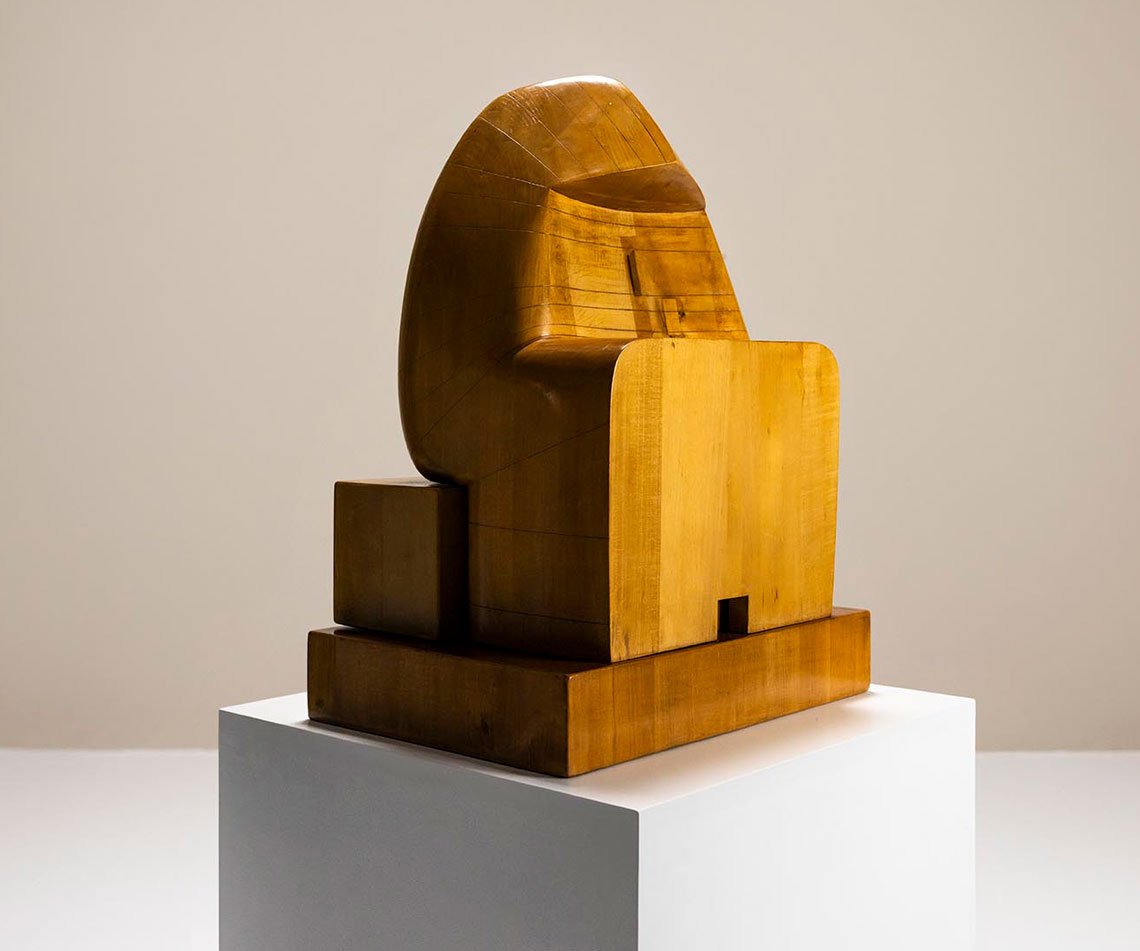 |
1974 linden wood sculpture “Capanno” (shed) by Giuseppe Rivadossi. |
Is there a particular craft, designer, or material that inspires you?
Italian wood craftsmanship is an inspiration, especially how past designers like Giuseppe Rivadossi treated wood almost like sculpture. That respect for material and form influences how we curate our gallery collection: we look for pieces that honor the hand of the maker, where construction is part of the language.
 |
AtKris Studio’s artfully curated booth of exceptional vintage design at PAN Amsterdam 2024, the Dutch art, antique and design fair. |
What do you see as the biggest challenge in the design market today? How should the industry respond?
Authenticity and oversaturation are big challenges. As demand grows, so does the flood of lookalikes and misattributed pieces. The industry needs to double down on attribution, education, and transparency, not just selling furniture, but actually helping people understand it and the difference between an original item and a copy or something that has been overly restored. That’s where curated galleries and trusted dealers still matter. The current trade dynamics and increasing import duties in the US are a challenge as well.
 |
Left: AtKris owner Krista and design specialist Tobias at PAD Paris 2025. Right: Beautifully modulated light is cast by Carlo Nason’s 1960s “Cactus” Murano glass floor lamp for Mazzega, with “ghiaccio” (ice) effect leaves. |
What’s next for you? Any upcoming projects, collaborations, or aspirations you’d like to share?
Yes! We are attending the Treasure House Fair in London at the end of June 2025, together with London-based art gallery Stern Pissarro. This is a new adventure for us, and we are especially excited about blending design and art together in a booth for collectors to see.
 |
 |
Discover AtKris Studio on Incollect








